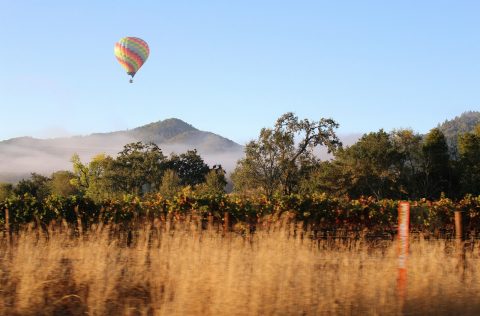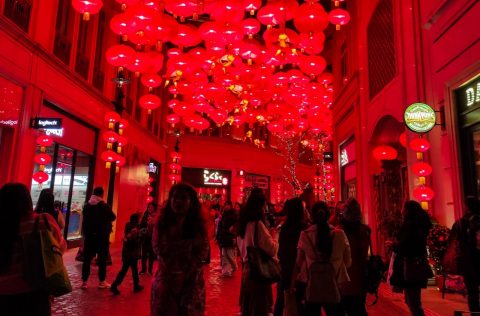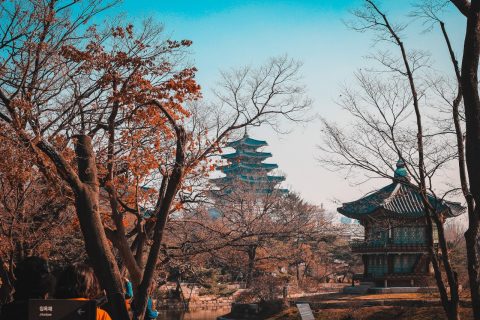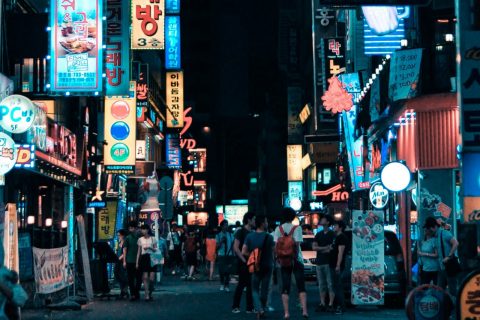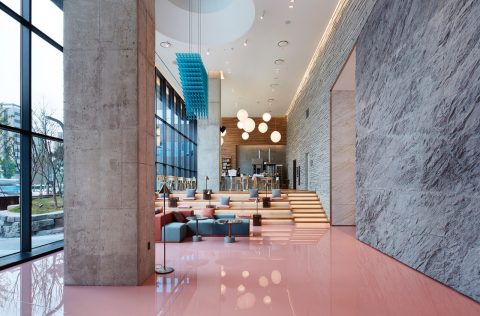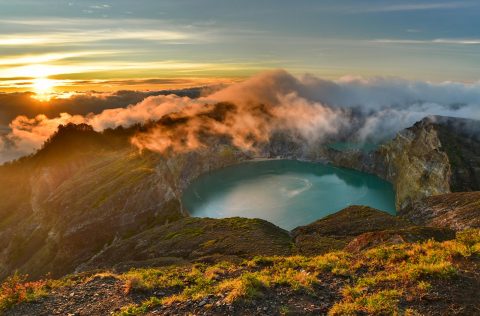15 of the Most Spectacular Spots in South Korea
Home to astonishing pink cherry blossoms, rugged mountain ranges, epic coastlines and green ripples of tea fields, South Korea is filled with beautiful places to visit. From centuries-old temples and sprawling national parks to Seoul’s ultra-modern architecture, we’ve rounded up the 15 most spectacular spots to see.
Image credit: Korea Tourism Organization
Donggung Palace and Wolji Pond
1/16Located near Gyeongju, which fringes the country’s south-eastern coast, and tucked away in South Korea’s only historical national park, this 7th-century palace complex is home to intricately designed temples, pavilions and a museum with thousands of well-preserved relics. More beautiful still is the surrounding Wolji Pond – its tranquil waters reflect a floating mirror image of the landscape, particularly photogenic at night.
Image credit: Korea Tourism Organization
Cherry Blossoms in Jinhae
2/16Every March and early April, South Korea turns pink as millions of cherry trees bloom. The best spot for taking in the show is Jinhae, a quiet coastal town about 30 kilometres west of Busan that hosts a 10-day festival in honour of the delicate flowers. Expect traditional dance performances, cherry blossom ice-cream and light installations come nightfall.
Image credit: Alamy
Haedong Yonggungsa Temple
3/16One of South Korea’s few temples to be situated on the coast rather than tucked away in the mountains, Haedong Yonggungsa offers knockout views of the turquoise East Sea at the south-eastern tip of the peninsula. Hop on a 45-minute bus from Busan’s Songjeong Beach to take in the three-storey pagoda and towering gold buddha statue.
Image credit: Korea Tourism Organization
Bukhansan National Park
4/16With its charming walking tracks, rushing streams and magnificent maple trees, this 8000-hectare park transforms into a kaleidoscope of fiery red, orange and gold in autumn (September to November). A 45-minute subway ride from Seoul, it’s little wonder that Bukhansan has become a magnet for hikers and avid photographers seeking a bird’s-eye view over the city.
Image credit: Korea Tourism Organization
Bukchon Hanok Village
5/16Far removed from Seoul’s hustle and bustle, Bukchon Hanok Village is a quiet oasis that’s filled with historic buildings in the traditional hanok style – some of the restored properties even date back to the 14th century. Featuring striking curved roofs, timber frames, calligraphy wall hangings and central courtyards, these properties are a glimpse into the country’s past. Plan to stay the night? Rakkojae Hotel has a yellow-mud sauna heated by firewood and a make-your-own-kimchi class.
Image credit: Korea Tourism Organization
Hallasan Mountain
6/16A one-hour flight from Seoul and another hour’s drive from the airport, Jeju Island’s Hallasan Mountain – actually a dormant volcano – is South Korea’s highest peak at 1950 metres above sea level. It’s an 18-kilometre, eight-hour return hike to the summit but the fields of flowers (purple and pink azaleas arrive in May) on the way up and the lake-filled crater at the top, not to mention the surrounding views of the island, make the venture well worth it.
Image credit: Korea Tourism Organization
PyeongChang’s Ski Fields
7/16Host of the 2018 Winter Olympics, PyeongChang is 90 minutes east of Seoul by KTX bullet train. During the ski season from mid-November to late March, you’ll find a winter wonderland of snow-dusted forests, ankle-deep powder and crisp blue skies. Make the InterContinental Alpensia Pyeongchang Resort your home base and you’ll have some of the country’s best runs on your doorstep, access to an indoor water park and two golf courses in addition to stunning mountain and lake views.
Bulguksa Temple
8/16Bulguksa Temple, just outside Gyeongju, is a marvel of traditional Silla masonry, filled with elaborately carved stone terraces, bridges and pagodas. Built in 774, the UNESCO World Heritage site is especially picturesque when surrounded by autumn foliage. Take an in-depth tour, meditate and witness an evening Buddhist ceremony during an overnight stay.
Image credit: Korea Tourism Organization
Daehan Dawon Tea Plantation
9/16A popular K-drama filming location, Daehan Dawon Tea Plantation in Boseong produces some 40 per cent of South Korea’s green tea supply. Head straight to the viewing platform to look out over undulating rows of greenery as far as the eye can see before exploring the fields. Spring, when the leaves are at their most vibrant, is the prettiest time to visit. There’s also an onsite museum and cafe to pop into for when you’d like a reprieve from the sun.
Image credit: Alamy
Hahoe Folk Village
10/16Time seems to stand still in this riverside village outside of Andong in east-central South Korea, with thatched houses and pavilions appearing as they did over 600 years ago. There’s masked dances and tea ceremony etiquette lessons on offer here, along with a restaurant serving up traditional dishes such as braised chicken.
Image credit: Korea Tourism Organization
Suncheon Bay Wetland Reserve
11/16Set on the country’s southern coast, Suncheon Bay Wetland Reserve stretches across almost 50 hectares. Visitors can walk or boat around the Ramsar-protected wetlands, encountering some 140 species of birds among the swaying, human-height reed fields. Keep an eye out for the endangered white-naped crane.
Image credit: Alamy
Dongdaemun Design Plaza
12/16Designed by renowned architect Zaha Hadid, this vast plaza near Seoul’s Dongdaemun Market is a wonder to behold — you won’t see any straight lines or hard angles, just undulating aluminium, steel and concrete. Inside you’ll find a history museum, design shops, galleries and lawns that span from the ground floor up to its roof.
Image credit: Korea Tourism Organization
Jirisan National Park
13/16Established in 1967, South Korea’s oldest official national park is so big that it occupies three of the nation’s nine provinces: Jeollanam-do, Jeollabuk-do and Gyeongsangnam-do. Make a dent in Jirisan’s 47,200 hectares of rolling mountains on the Jongju Course, a challenging three-day, two-night hike. If you’re lucky you might even spot an Asiatic black bear.
Image credit: Alamy
Homigot
14/16Located on the easternmost point of the country, Homigot, in North Gyeongsang Province, is the first spot in South Korea to catch sight of the rising sun. On New Year’s Eve, join thousands of people to watch dawn break over the Hands of Harmony – a pair of giant bronze sculptures on the waterfront – and sample some tteokguk, a traditional rice cake soup.
Image credit: Korea Tourism Organization
Juwangsan National Park
15/16Nestled in the Baekdu mountains, around a three-hour drive from Seoul, this park might be relatively small (10,600 hectares) but it punches well above its weight. Think jagged limestone pinnacles, hidden-away waterfalls, the postcard-perfect Daejeonsa Temple and Jusanji Pond, a serene body of water studded with 150-year-old willow trees. Soak your muscles in an outdoor hot spring bath at the nearby Sono Belle Cheongsong after a long day of wandering through the wilderness.
Up Next
16/16


